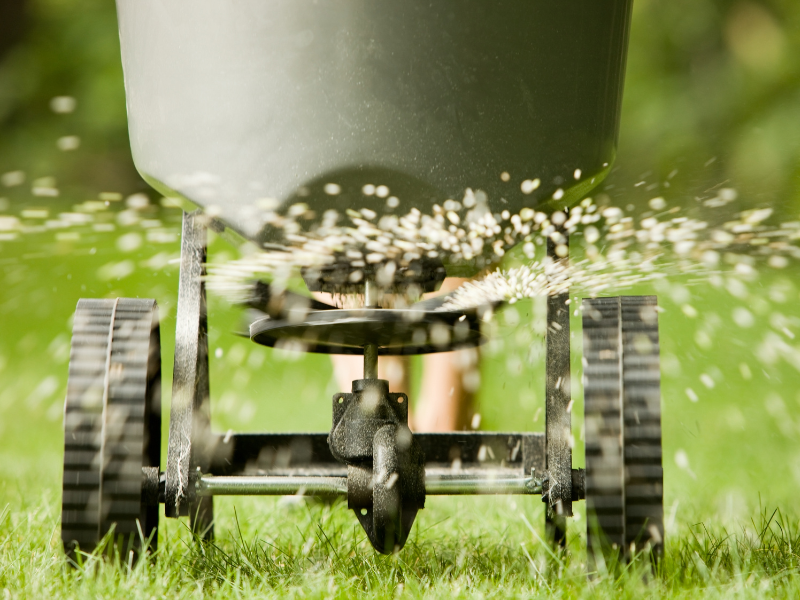Seeding your lawn is only the first step to a healthy and beautiful lawn. Here’s what to do after you’ve spread grass seed:
Watering Seed:
- Keep the area damp 3” down for the first month
- Water slowly with a fine spray to avoid erosion (fan/oscillating sprinkler works best)
- Do not allow water to form puddles, this will drown out the seedlings
- Watering in the morning is best, avoid late afternoon or evening to help prevent fungus
- Mow new grass to a height of 2.5”-3” to promote growth and thickening (allow the grassy area to dry enough to allow for a mower; if it is too muddy the mower will damage the ground/grass)
- Gradually raise mower height each time to achieve a final cutting height of 3-4”
- Continue long intermittent waterings weekly, achieving a total of 1 inch per week for optimal results
Fertilizing seed:
At the time that seed is worked into the soil, a starter fertilizer should be applied. This will provide vital nutrients for the seedlings as they take root, promoting quicker growth and a strong root system. Just like sod, it is highly recommended to utilize a fertilizer program to yield best results for a strong and healthy lawn.
Weeds and seeding:
Due to the seeding process, weeds (possibly quite a few) will emerge. This is because weed seeds that already existed either in or on the surface have now received the elements to germinate – water, light, and soil contact. This is a normal and expected event. Broadleaf weeds can be sprayed after 3 mowings. Annual grassy weeds will die back in the colder months leading into winter. Pre-emergent/fertilizer applications the following spring will prevent annual grassy weeds from returning.
Other Notes about Seed:
Did you know it takes 6 months for grass to fully mature? In fact, a single seedling spike will grow to the size of your fist. This is the reason that seeding ideally takes place (primarily) in the fall. It allows the grass to germinate and begin establishing during cooler temperatures before going into the stressful summer months.
Sometimes seeding must take place at different times of the year due to restrictive circumstances. In these cases, the guidelines for care are the same but may need to be altered a bit and results may take longer. The focus is good watering practices with seeding. If temperatures are cool then it will take longer for germination and development.
Want us to take care of the seeding and fertilizing? Our team at Custom Creations in Marshfield, MO will be happy to take it off your to-do list.
We also offer grass seed, spreaders, and fertilizer at our store.



